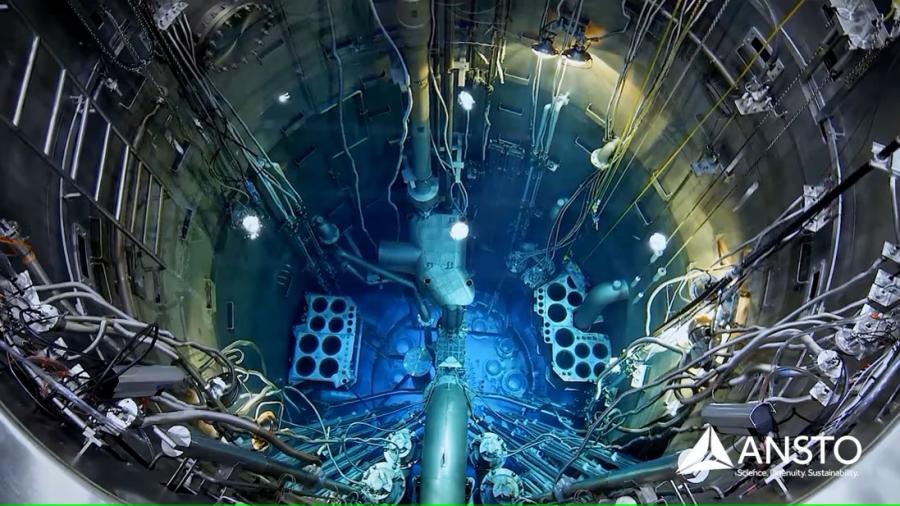Silicon irradiation
Silicon irradiation also known as Neutron Transmutation Doping (NTD), is conducted in the OPAL reactor.
Through this process thermal neutrons react with the silicon atoms, changing some of those atoms to phosphorus, which reduces the resistivity of the silicon crystal and improves its ability to conduct electricity.
The NTD process is used when a high level of precision and uniformity in dopant (phosphorous) distribution is required. This allows the achievement of a better, more reliable performance across all electronic devices but is particularly critical for high power and very high power devices.
Capabilities
- High 'thermal to fast' neutron ratio (Cd ratio) - ensures minimal crystal lattice damage / disturbance during irradiation
- High irradiation capacity - above 50 tons per annum ensures a quick turnaround and large volume operation
- High accuracy - ensures the final resistivity within +/-5% of specified target
- High flexibility - we can accept a wide range of target resistivities and silicon sizes
- High quality - we maintain ISO 9001:2015 certification
Design specifications
- Six vertical irradiation facilities within the OPAL reactor
- Location: D20 reflector vessel
- Cd ratio (thermal to fast): > 800
- Thermal flux range: from 3.0E+12 n/cm2 sec to 1.4E+13 n/cm2 x sec
- Irradiation conditions: unsealed irradiation can in a rotating rig
- Cooling: downward water flow
- Loading/unloading: possible during reactor operation at nominal power
- Acceptable range for dimensions of silicon batches:
| Batch diameter | Diameter range | Length range |
|---|---|---|
| 8" | 200 - 204mm | 550 - 600mm |
| 6" | 151 - 154mm | 550 - 600mm |
| 5" | 125 - 129mm | 550 - 600mm |
| 4" | 102 - 105mm | 550 - 600mm |
Production processes
There are six specialised facilities in the OPAL reactor pool which are utilised for the irradiation of silicon.
Irradiation times required for different silicon ingots may vary from one hour (or less) to five days, depending on target resistivity requested by the silicon manufacturer and facility used. Initially, the irradiation can (container) containing fresh silicon ingots (batch) is loaded by highly skilled utilisation operators into the irradiation facility. The can with silicon is then irradiated with neutrons. When the required parameters as specified by the customer are achieved, the irradiation can with irradiated silicon inside is removed from the facility and transferred to the adjacent service pool to "cool".
The irradiated silicon “cools” by radioactive decay approximately 48 hours after irradiation. It is then removed from the service pool using a dedicated unloading station and cleaned.
The final step is to ensure that the silicon ingots are no longer radioactive and ready for shipping to the manufacturer.
Watch the process

ANSTO's silicon irradiation services operate in compliance with 9001 : 2015 Quality System, ensuring that a reliable and qualitative supply of NTD-silicon is provided to customers.
Meet our team

Stewart Pullen
Operations Manager
